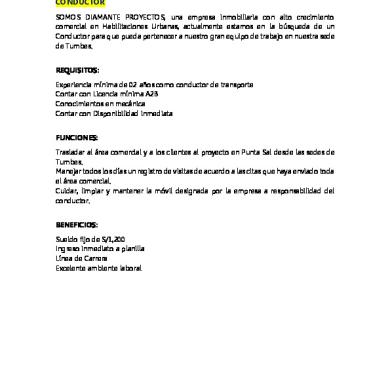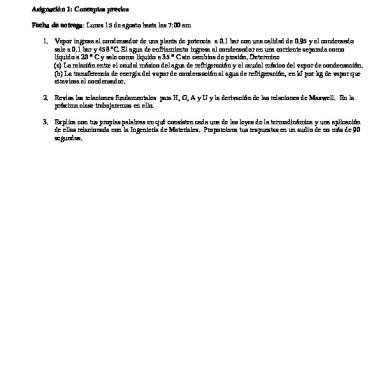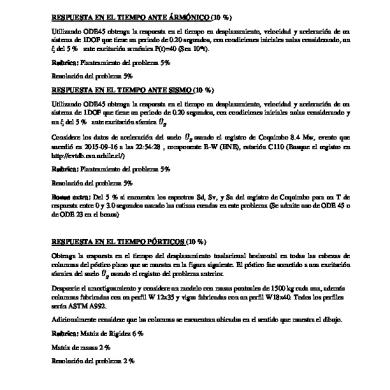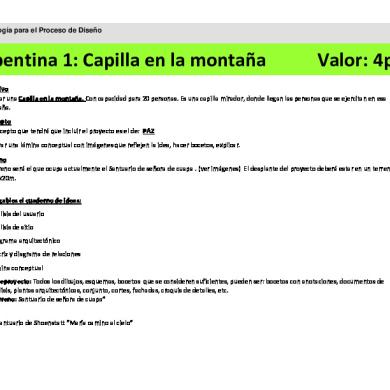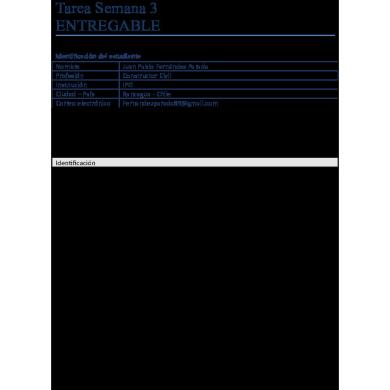* The preview only shows a few pages of manuals at random. You can get the complete content by filling out the form below.
Description
CONDUCTOR AND ITS PROPERTIES 3. Conductor is an equipotential body. Every point on conductor will have same potential. F- inside
AV
Home work
TÉdem
0
-_
or
for
¥
any
points
two
metallic
(
( EE9E
÷¥o
All
point
on
surface
equipotential Electric field along surface are
must
cost
.
be
zero
-0
0=900
5. No electric field lines are present inside the conductor and electric field on surface is perpendicular to it. VJ
1010¥
.
chapter -1
Read
4. At the surface of a charged conductor, electrostatic field must be normal to surface at every point.
of bodies
conductor
NCERT -
.
except
and
Solve
After completing
exercise
module)
.
ILLUSTRATION
10¥ A neutral spherical conductor of radius R is kept near a
V=k¥
point charge as shown. a) Calculate potential of conductor b) Calculate potential at B due to induced charge c) What will be the magnitude and direction of electric field at centre due to induced charge?
¥
And
VB==Vq-Y =
VB Wind
✓ centre
=
VB
=
-
-
+
R
Vind -
+
'
r
•
+
q
-
+
Ed
(a)
Veenduotou
V=Vq
+
V=kfVJ
¥
End
-
-
B "
£
-_
to at
pt
.
due
charge
B
%¥=µ
=o
Éind Éq=o +
=
Ventre
Wind
*
-
④→
Potential
KILEY
Eq
=
k§z
Eind=k¥
←
→
AL
CONDUCTOR WITH CAVITY (ELECTROSTATIC SHIELDING) If there is no charge present inside the cavity then electric field inside cavity is zero. All the charge given to the conductor will lie on the outer surface of the conductor.
VJ
CAVITY WITH CHARGE Equal and opposite charge is induced on the inner surface of the conductor. Q
clout
point
: 2C
-
is
E. F.
surface
oh -19in ,
5C +
9. out
Gout =
=
Goat
=
=
=
=
-
=
°
0
-9 ,
Conserved
Q -9in @
surface
=°
fending 9in
every
gaussian
of &
9in
VJ
at
zero
C- %)
0+9
=
Q
.
ILLUSTRATION A point charge q is kept inside the cavity inside a spherical conductor as shown. What will be the charge present on inner and outer surface of the conductor? +
-
q
q
q
q
(A)
VJ
B)
ILLUSTRATION Three spherical hollow conducting shells are given charge q, −2q and 4q respectively. Find the charge present on inner and outer surface of all three conductors. 4q − 2q q °
0
-
¥;
Says
"
☒
"
"" ↳
↳
,
52--5
5£
£
% -1%2=9 ,
9s
VJ
--
,
99k
q
94=-9 9ns
,
-
✓
-19,2+9%+94+955=0
§
Is > •
-
.
9%+94=-29
§ S
=
=
9s
=
-_
,
-19
39
As >
=
-94
1.
2.
Resultant electric field due to charge on S1 and inside S1 is zero on S2 and outside S2. Resultant electric field due to charge on S2 andfinside S2 b- S1. is zero on S1 and outside outside
inside
No
net
due to No net
S2
9,
S1
q1
q q2
VJ
,
force
an
charge
force 92
9,
ons , & q on
and
9 on
due to
52
52=+9
51=-9
DISTRIBUTION TYPE Sz
Sz
Sz
S,
s,
s
S
q
q
q
S1-7NU
,→U sz→U s
p
z
S
,
S,→NU
{
→
4
5
{
→
→
5
→
NU
{
→
U
,
U
Sz
9
,
q
q
5.
,
q
Sz
q
VJ
,
z
{→U
Sz s
Sz
U NU
6
4
NU
sz→NU
>
5
NU
{
NU
,
ILLUSTRATION An uncharged conductor of inner radius R1 and outer radius R2 contains a point charge at centre. Calculate: a) electric field at point A and B b) Potential at point A and B cA=r, ^
52
CAB
µ Rz S,
p,
q
A
=
V2 VB
↳
¥
→d¥
¥-2
%+¥s
=
'
•
ES2
=
Eps
If
>
¥?
__
EB
+ ,
Us
,
=k÷
Va=Vsz ( Surface E)
5¥
✓A
"
EA= F-
0
rs=Éq÷É+És
V,
=
-
,
0
VJ
=
1%-2
V1
+
"¥,
Us
,
-1
+
Use
:# ¥
"
+
ILLUSTRATION An uncharged conductor of inner radius R1 and outer radius R2 contains a point charge at a distance of R1/2 as shown. Calculate: a) electric field at point A and B b) Potential at point A, B and centre 52
¥
F- A
=
0
E☐=%£ ¥
vB=*÷
S,
"
F
VA
t .
'
E
q
•
'
A
B
,
Ed
"
s
,
→
{→
VJ
NO
k¥
=
Us
,
,
V LR2
=
=
Vq Us +
,
+
Vsz
=¥÷;"k÷¥
,
U




